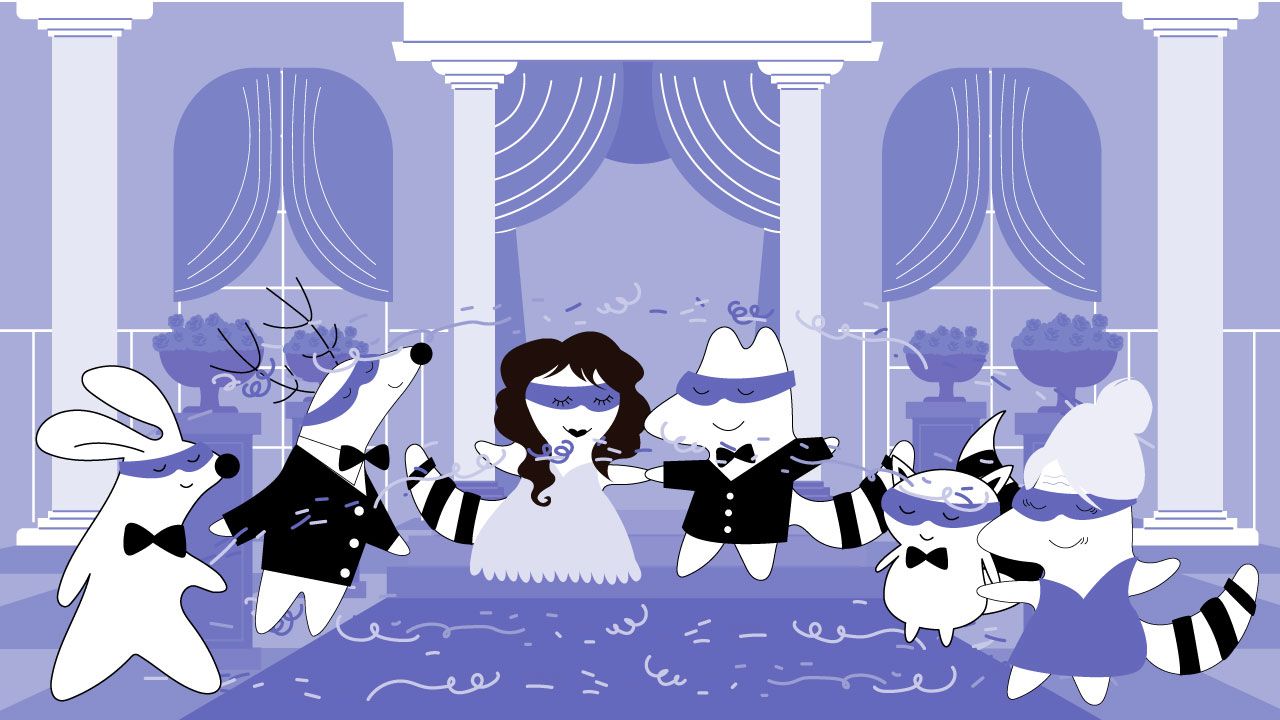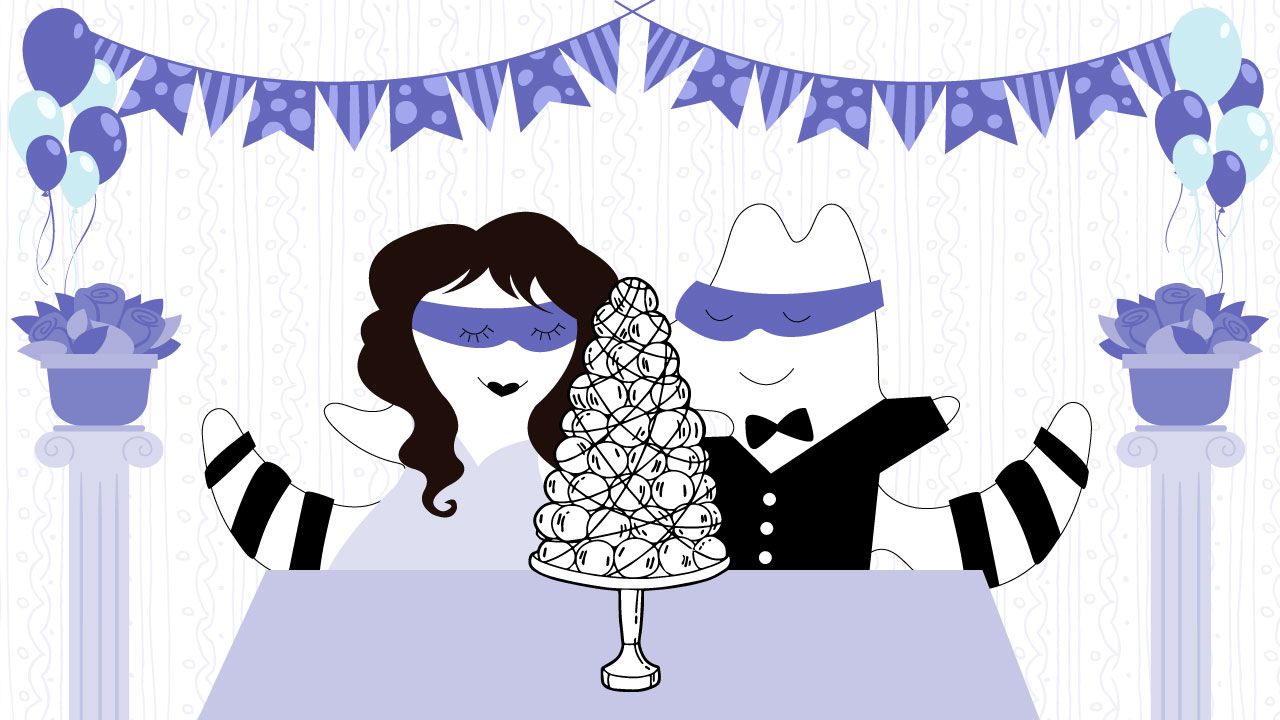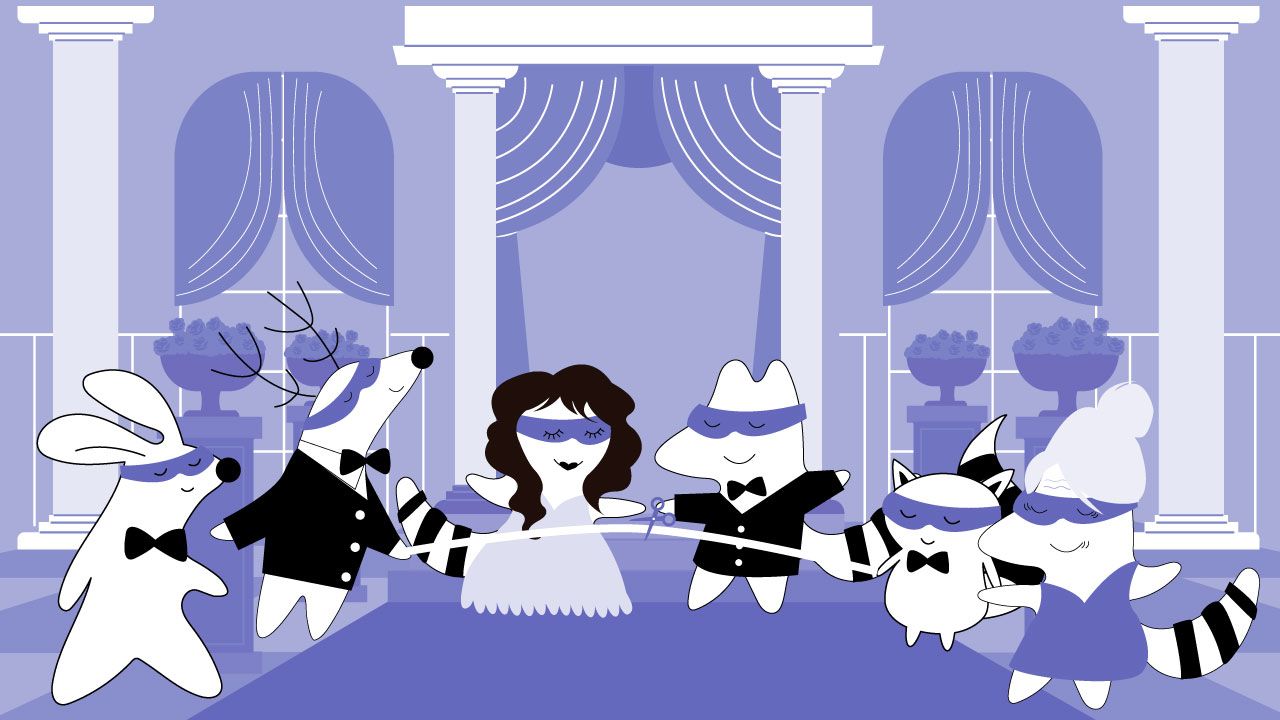
When most people think of French weddings, they think of two things: lots of champagne and lots of red lipstick. But, what many people don't know is that French weddings can be very different from American celebrations. Why is that, and how do the French actually do that?
Lack of bridesmaids and groomsmen, no several-tier cakes, elegance, comfort, and over-the-top entertainments – this is what we'd say if we wanted to describe a traditional French wedding in a few words. However, there's much more to it than that.
The traditions practiced at French weddings can actually give great insight into French culture and values. So, even if you are not invited to any French weddings (yet, we hope), it still can be very helpful to learn more about the traditions you’d encounter at a typical French wedding. Let’s explore the topic together in the article below – read on.
Learn French with Langster
The Ceremony is Not Just About the Bride
One of the first things you'll notice about French weddings is that they are not just about the bride. The ceremony is a celebration for the couple. This is reflective of French culture and values, which focus on family and togetherness.
Another interesting difference about French weddings is that there is no "bridezilla" culture. In America, it's a stereotype that the bride is allowed to be extremely demanding and difficult to work with in the months leading up to “her” wedding. But, in France, this would be considered bad etiquette.
So, instead of stressing out over every little detail, French brides typically take a more relaxed and easy-going approach to wedding planning. This can actually be a refreshing change for couples who have been stressed out enough by wedding planning and need some time to enjoy the process.
So, what are French weddings actually about, then? They are about celebrating the love of a couple and their families coming together to celebrate that love. They are about enjoying good food and wine, and about having fun with friends and family. In other words, French weddings are about celebrating life and love itself in the best way possible in their culture.
No Bridesmaids and Groomsmen – just Témoins
If you attend a French wedding, don't be surprised if you don't see any bridesmaids or groomsmen. In fact, it's actually quite common for couples to not have any attendants at all. Instead, the couple will typically choose one or two "témoins" (witnesses) to stand with them during the ceremony.
The role of the témoin is similar to that of a best man or maid of honor in America. They are typically close friends or family members who will help the couple with wedding planning and be there for them on their big day. They often can be any gender and choose to wear whatever they want.
Just like in American weddings, where the best man and maid of honor often give speeches, French witnesses also usually give speeches before everyone makes a toast to the newlyweds.
Two Ceremonies: One Civil, One Symbolic
Another difference between French and American weddings is that there are typically two ceremonies: a civil ceremony and a symbolic ceremony.
The civil ceremony is the legal marriage ceremony, which is conducted by a government official. This is similar to an American city hall wedding in that it's a very simple and straightforward affair. The couple will exchange vows and sign the marriage contract in front of their witnesses and close family, and that's it.
Unlike in America, to be legally married in the country, French couples have to go to the town hall (mairie) no less than 10 days and no more than a year after the authorization to marry has been granted. Traditionally, the doors to the mairie remain open during the ceremony, to provide people with the option to potentially object to the marriage.

After the civil ceremony, the couple will then have a usually more elaborate, symbolic wedding ceremony, that takes place either later this day or the next day. This is where the couple will exchange rings and say their vows again, but often in front of a larger group of family and friends.
There are typically flower girls here, boys are carrying the rings, and the bride and groom sit on the red velvet chairs for the exchange of vows. The symbolic ceremony can be held anywhere, from a church to a beautiful outdoor location, and it’s often similar in general terms to a traditional wedding day in America.
It's not uncommon for the bride to wear two different dresses during the two ceremonies. She will usually wear a simple white dress for the civil ceremony and then change into a more elaborate dress for the symbolic one.
The Procession is a Must
During the wedding party and other wedding celebrations, it's time for the procession. This is a French tradition where all the guests follow the couple around various sites (such as church, drink reception, etc.) and line up on either side of them. The guests then shower the newlyweds with rice, flowers, or confetti and make the most noise possible.
This is a fun tradition that allows everyone to get involved and participate in the celebration. It's also a way to get some great photos of the couple as they are showered with love and well-wishes from their friends and family. Today, the more typical version of this tradition is a car procession following the newlywed's vehicle.

The Mother-Son Walk Down the Aisle
One of the most touching moments of a French wedding reception is when the mother and son walk down the aisle together. This tradition began as a way to honor the mother and son's relationship and to show the importance of the mother in the son's life.
Typically, the bride walks down the aisle with her father, but when the mother and son walk down together, it's a very special moment. The two usually have a chat before heading down, and it's a wonderful way to show the close bond between them.
Many mothers are often emotional during this moment, and it's a chance for them to reflect on all the milestones their son has accomplished. It's also a time for sons to show their appreciation and love for their moms.
Cocktail Hours (Yes, Plural)
When it comes to celebrating, the French know how to do it right. A French wedding typically has multiple cocktail hours, where guests can enjoy drinks and traditional local hors d'oeuvres like pâté, mini vegetable tarts, and French cheeses. This is a great time for guests to mix and mingle and get to know each other better.
Champagne is usually flowing during these cocktail hours, as it's a staple of French weddings. In fact, no French wedding is complete without a champagne tower! This is a tradition that goes back many years, and it's a way to really celebrate in style.
The tower of champagne is usually a large, ornate structure that holds dozens of glasses. Champagne is poured onto the top glass, and it flows down into all the cups underneath. This is a great way to show off your favorite bubbly, and it's a tradition that always gets people talking. The tower of champagne is sure to be the highlight of any French wedding celebration.
Food and Drinks Reflect the French Cuisine
When it comes to the food and drink at a French wedding, you can expect nothing less than the best. The cuisine is usually reflective of French culture, with traditional dishes such as beef bourguignon, potatoes au gratin, and coq au vin.
No matter what dishes are served, you can be sure that they will be delicious and reflect French culture. After all, good food and drink are an important part of any French celebrations.
Croquembouche
The croquembouche is a traditional French wedding cake – but it’s not really a cake,. Instead, it’s a pyramide of caramel-covered cream puffs stacked on top of each other. It's a whimsical dish that is sure to impress the guests, and it's a great way to show off your French heritage.
The croquembouche is usually made up of dozens of cream puffs, and the guests usually take three or four each, so the final number depends on the number of attendees. Needless to say that at bigger weddings, croquembouche can be quite a challenge to assemble.

Les Dragées
At the end of the reception, guests are usually given les dragées, which are small, round candies (traditionally, candy-coated almonds) that are often used as wedding favors. These days, they come in all sorts of flavors and colors, so you can really get creative with them.
You can also personalize them with the names of the bride and groom, or with a special message. They make for a great way to thank your guests for coming to your special day, and they're a delicious treat that everyone is sure to enjoy.
Entertainment Is Over the Top
At a French wedding, you can expect nothing less than the finest entertainment. The goal is to have an over-the-top reception that really gets the guests excited. This usually means hiring a top-notch band or DJ and going all out with the decorations and lighting. The key idea is that guests can’t be bored during a wedding night.
Yes, night – another thing we need to mention. The French love to celebrate, so the party usually starts late and goes into the night. In fact, some receptions can last until the following morning! This is a great opportunity for guests to let loose and have some fun.
Of course, the bride and groom are typically the last ones to leave the party. They want to make sure that they get to enjoy it fully and that they have a chance to celebrate with their friends and family. It's a night (or morning) that they will never forget!
Other Important Traditions of a Wedding Reception

In addition to the traditions mentioned above, there are several other French wedding traditions that are worth mentioning.
The Father-Daughter Dance Opener
One of the most beautiful French traditions is the father-daughter dance opener, which is often seen in France as a great way to get the party started. The father-daughter dance is a special moment that celebrates the bond between a father and daughter, and it's a tradition that always brings tears to peoples' eyes.
White Ribbon-Cutting
Another interesting French wedding tradition is the white ribbon-cutting at the beginning of the wedding reception, when the groom comes to “collect” the bride. The bride cuts a white ribbon with scissors, which symbolizes her ability to pass through the obstacles of married life. This is a symbolic gesture that marks the beginning of the wedding festivities.
La Coupe de Mariage
Lastly, there is the la coupe de mariage, or "wedding cup." This is an engraved, two-handled cup that is used to celebrate the marriage for the first time. It is passed down to the bride and groom as a family heirloom, and they drink from it together, pledging their love and commitment to each other. Today, though, it’s often just a symbol, and couples are less likely to toast with it.
Bottom Line
So, there you have it – a few of the most important French wedding traditions. As you can see, they differ quite a bit from American weddings, and that’s part of what makes them so special. If you’re looking for an excuse to celebrate in style, why not consider having a French-themed wedding? It’s certain to be a day (and night) that you won’t forget!









